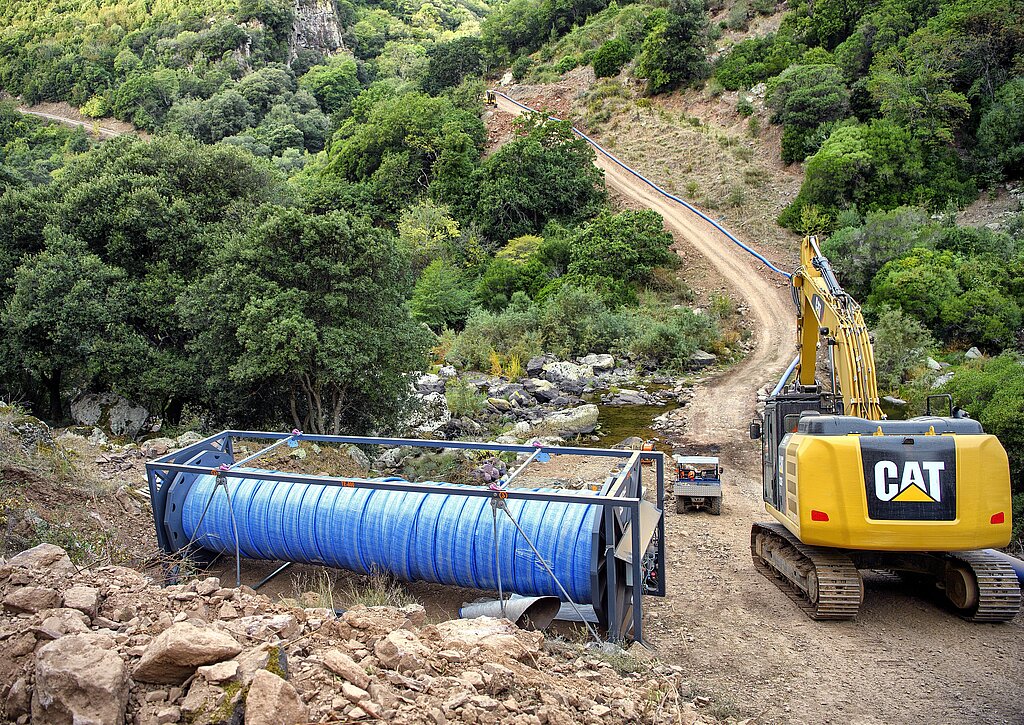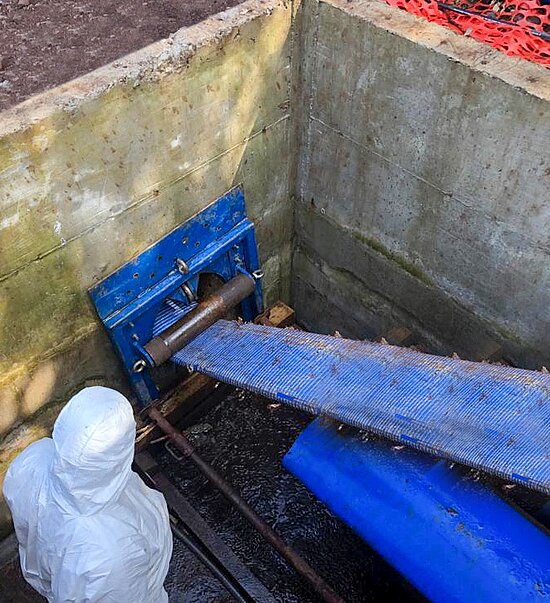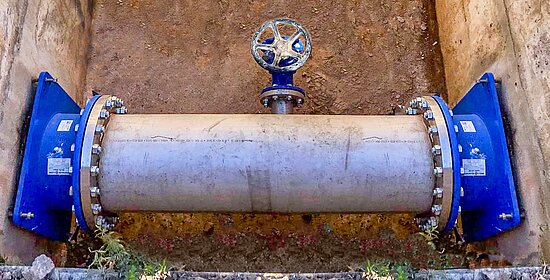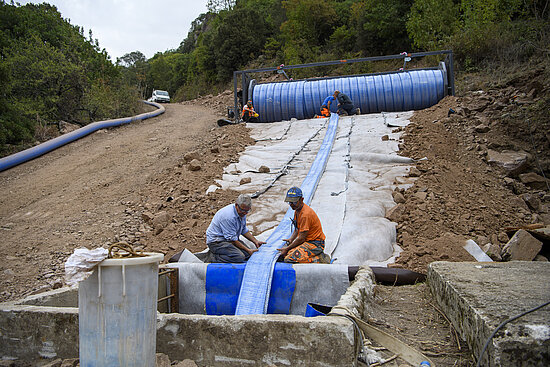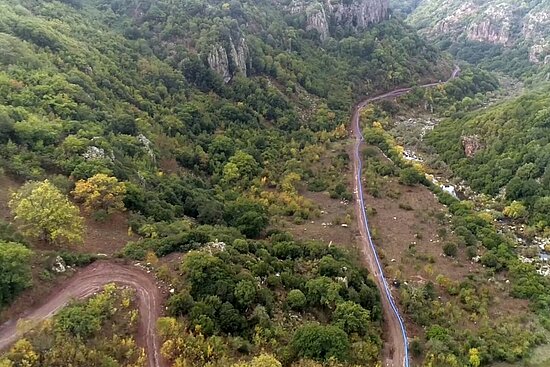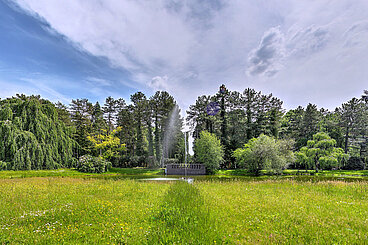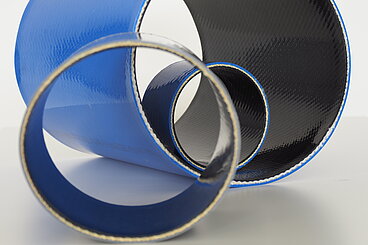The implementation
Access to the pipeline was provided via several shafts with valves and fittings along the route, so that even selective excavations for foundation pits could be completely avoided. The intrusion and impact on the pipeline and the surrounding area could thus be reduced to a minimum.
The precise organisation of the intervention phases ensured optimum execution of the work and minimised pipeline downtime. The project was divided into only three construction phases, mainly enabled by the special and efficient bypass solution, also realised with Primus Line® technology.
Each of the three construction phases took place in the following order:
For constructing the bypass under the difficult logistical working conditions, the high flexibility of the Primus Liner was of particular advantage. In each of the three construction phases, approximately two kilometre long sections of the pipeline were rehabilitated. For this purpose, 1,000 metres of the Primus Line medium pressure system DN 400 and 1,300 metres of the Primus Line medium pressure system DN 350 were available for the bypass. Using the Primus Line® system, it was possible to guarantee a hydraulic capacity that was higher than or equal to the minimum that would have been achieved with the network operator's original solution. This alternative solution would have provided for the laying and preparation of eleven bypasses with 1,000 metres of DN 300 pipes each.
For optimum practicability, Benassi's trenchless division decided to supply the bypass liner in nine sections with an average length of 255 metres, already equipped with flanged end connectors and wound on two metre wide transport reels each. For a speedy installation and to protect the material, a specially designed and manufactured hydraulic winding machine was used during installation, which was pulled along the line by an excavator.
After commissioning the bypass and draining the pipeline, the special fittings that were present in all intermediate manholes of the bypassed section were dismantled and the inlet and outlet pipes in the manholes were cut close to the concrete wall using suitable equipment.
Next, a video inspection was conducted from shaft to shaft to examine the pipe from the inside for damage or obstructions that would impede the Primus Liner from being pulled in.
The liner was then pulled into the pipe by means of a winch. In some cases, installation lengths of up to 1,000 metres were realised in one piece. For this purpose, the technicians from Benassi and the material manufacturer Primus Line carried out a feasibility test in advance for each pull-in section, taking into account the frictional forces that would arise. In doing so, an attempt was made to precisely determine the optimum ratio between the greatest possible care for the material and optimum utilisation of its performance capability and high tensile strength.
In view of the asbestos cement of which the old pipe is made, the underground work was carefully planned. Compared to the classic open construction method, the risk of spreading asbestos fibres is lower with trenchless rehabilitation technologies anyway. Nevertheless, appropriately trained personnel are needed to carry it out. In addition, Benassi provided a mobile cleaning system that cleaned the winch’s cable immediately after it exited the pipe. This reduced the risk of dispersing asbestos fibres by sliding the winch cable along the walls of the pipeline during insertion.
After the liner is pulled in, the specially designed connectors are used to reconnect the pipeline. For this project, Primus Line provided a custom solution for anchoring to the pit wall so that each connector could be inserted into the existing structures to save space. This allowed maintenance of the existing shafts and avoided additional excavation for the new construction.
After the Primus Line® system was installed, new valves and fittings, which were located in the finished shafts of the connections, were installed in all shafts of the rehabilitated section.
At the end of the rehabilitation work, pressure testing of the rehabilitated pipeline section between the initial and final sections of the bypass was performed. This test was carried out with a pressure of 20 bar at the lowest point of the pipeline. The pipeline was disinfected with chlorine solution in sections of about two kilometres. This was followed by reconnection of the sections to the rest of the pipeline.
After the rehabilitated pipeline section was put back into operation, the bypass was drained and finally rolled up for the next re-laying of the subsequent section of pipeline to be rehabilitated.
![[Translate to English:] [Translate to English:]](/fileadmin/_processed_/5/b/csm_1_b9333e0cbd.jpg)
